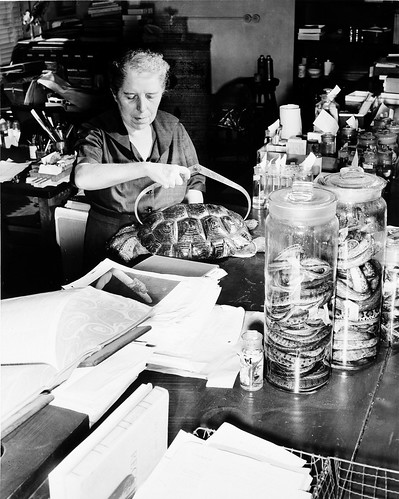 |
| Johannes Gutenberg |
Industrial and commercial life changed rapidly and dramatically. By several centuries later, millions upon millions of books had been printed, in all the countries of Europe, creating new industries, shops, markets and ways to distribute knowledge. There were best-selling authors across a spectrum of fields, languages, styles, and topics. The class system began to erode, ordinary people could read without knowing Latin, news could be distributed rapidly far and wide.
Even more interesting was that the spread of knowledge, though perhaps including a lot of chaff as well as grain, helped lead to the Renaissance and the Enlightenment, and the scientific revolution. It led to huge changes in intellectual, technical, and aesthetic life. New knowledge, even of a highly technical form, could spread rapidly and be discussed among colleagues. Universities could be founded almost anywhere, not just at a few libraries with scrolls, and moved from lectures about texts to assignments of textbooks and library scholarship.
Of course, despite this widening out, there was still a class-based society, still wars and pestilences, bigotry and ignorance. But a middle class, with commercial, political, and intellectual clout developed. A privileged few could no longer contain knowledge, as a form of secret privilege. But by and large I think most of us would say that it was on the whole a very good thing.
That was Gutenberg, act I. And we're now experiencing Gutenberg II!
Gutenberg II
One is always tempted to dub one's own time as Important. Nobody wants to be living in a Dark Age. We want Jesus' return to be imminent. And as a result when anything changes we are tempted to name a new Important Age, critical in human history. So it is easy to name our time in human history as the Information Age, and pat ourselves on the back and say that we are transforming the world. But it does seem important that computer electronics has greatly changed and hugely accelerated new ways of storing and distributing information, with fewer delays, wider dissemination, and more interaction than has ever been possible before. It can be seen just as another step in the speed, scope, and dissemination of information. And this is widening to have even a more global basis than printing did.
 |
| Internet Map; Wikimedia Commons |
We have electronic storage of class lectures, pre-recorded as well as live online lectures, video and other ways to interact in scientific and scholarly and esthetic contexts, more ways to comment, question, or discuss ideas. Online classes are gaining huge global reach, and even traditional-style fixed-paper journals are going from killing trees to gobbling up electrons. Journals can publish anything relevant whenever it arises, with unlimited ancillary information, and the ability of readers to comment, disagree, correct, or reinforce findings. Students in universities and colleges are forgetting where the 'library' is--or perhaps even what it is.
Blogs like this, along with the networks of Facebook and Twitter, professional connectors of all sorts like LinkedIn and many others, daily weave the web of connections. Students take lectures on line, work together in groups, submit their work, and communicate with faculty electronically, at any time of day or night from anywhere in the world. They chat, text, and tweet each other at a frenetic pace.
While societal changes are usually not point-events in time, and not even the printing press was an instantaneous invention, these changes clearly are happening, and accelerating. What used to take generations, perhaps, now only takes decades or less. As in the late Middle Ages, children born into the new era grow up with the new conditions as part of the only environment they know. This is not change for them, it's reality.
So, ready or not, Welcome to Gutenberg II!
The universe of Broadreach information transfer
Gutenberg II is intercalating rapidly everywhere, but perhaps nowhere more than into college and university life. What will, or should, we do as part of this sea change? In our view, we should not just try nervously to adopt piecemeal this or that aspect of the new age in a reactionary way, but should move energetically to embrace the reality as a whole. Online courses, with students in increasing numbers 24/7 and from around the world are going to replace at least some on-site classes, and professors talking to a room half-full of students dozing or texting, will be replaced by electronic communication of diverse and yet to settle-out forms.
Faculty are currently judged by a rather staid or bourgeois set of self-importance style categories, research, teaching, and service, with the mix varying depending on the institution's nature. We have rather entrenched ways of evaluating (score-counting, really) each of our 'impact' in these categories. Department Chairs and Deans judge performance and promote faculty on these kinds of grounds. Of course, since we're middle class and need to protect our jobs, we have learned to game the system, to make it more legalistic--and that makes it more stodgy, rigid, and stultifying rather than stimulating energy and quality as much as it might. But the grounds are shifting: in the predictable future, major careers will have a very different shape, and so they should.
We should shift from categorical 'impact to unified 'broadreach' concepts to evaluate a faculty member's effectiveness and contributions. The distinctions among research and teaching, among professional and public communication are blurring rapidly. We need to create Broadreach University as the new local, national, and global reality, a fabric of synthesis in communication, learning, and developing new ideas and knowledge. How we do this will have to be worked out. Bean-counting evaluation criteria will have to change in some way, because as has always been in human history, is chaff with relatively less grain. People--faculty and students--will learn to game the system. So will it be in Broadreach U. But change will come and we have a chance, today, to shape it in appropriate ways for society.
 |
| Empty lecture hall; Wikimedia Commons |
One of the earliest, loudest, most eloquent voices advocating for open access is Michael Eisen's, biologist and co-founder of the Public Library of Science. He gave a talk in San Francisco on March 27 on OA, the transcript of which he reproduces on his blog, saying, among other things,
Every year universities, governments and other organizations spend in excess of $10 billion dollars to buy back access to papers their researchers gave to journals for free, while most teachers, students, health care providers and members of the public are left out in the cold.
Even worse, the stranglehold existing journals have on academic publishing has stifled efforts to improve the ways scholars communicate with each other and the public. In an era when anyone can share anything with the entire world at the click of a button, the fact that it takes a typical paper nine months to be published should be a scandal. These delays matter – they slow down progress and in many cases literally cost lives.And, on the same topic, Nature covers OA and the changing world of publishing extensively in this week's issue. Potential career consequences of publishing in OA journals is here, e.g., and from another piece, "the Web opens the workshop windows to disseminate scholarship as it happens, erasing the artificial distinction between process and product."
And, it won't be just 'open access' journals that we'll read, but 'open publishing' will be how we'll publish. ArXiv writ large. Yes, deans and universities will need to come up with new measures of scholarly impact, but that's already being done.
Broadreach will differ widely among what are currently the traditional disciplines. It will be broader and less technical, relevant to wider audiences, in the arts and fields like anthropology than in more densely technical fields such as chemistry or mathematics. But perhaps we'll see the reach even of the latter to be less narrow than we might expect. Time will tell. That's part of the fun.
One hears concerns that too many students don't attend class, don't do their homework, cheat, graduate without having invested much effort or learned very much, from tired faculty who don't really care in any uniform way. Lectures may be boring or inscrutable. Faculty game the system for their own career-building. Departments use various means of manipulating course enrollments for obtaining resources, to attract paying students--they can view instructors as entertainers whose jobs depend on how popular the material they provide are. Students manipulate their choices of classes and professors to game their grade point averages for getting jobs or graduate admissions, or to avoid what's too difficult. Sadly, it's clear that this is all true. But this isn't a description of Broadreach University. It's true of today's universities!
Of course Broadreach will have its flaws and in various ways won't be as good as on-campus universities, or won't really replace on-campus U, and that there will still be ways to game the system, cheat, slide and glide, and so on. Perhaps a major or even the major gain may be that we can educate and stimulate the real thinkers among us to innovate and create, without the rather useless need to satisfy some curriculum for a formal degree: advanced degrees weren't needed by Shakespeare, Wordsworth, Darwin, Einstein....or Bill Gates. Think how liberating Broadreach University could be for those who drop out when they've got what they need!
Whether the gaming or abuses will be more, or less than they are today is rather moot. BU is coming, whether anyone likes it or not. What we should be doing--what we must do and will be doing whether kicking and screaming or cheering and welcoming, is adopting the reality and doing our best to make it work.













